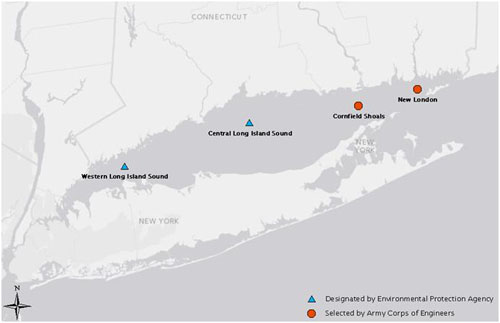Advocates rallying to stop federal plan to dump in Long Island Sound

Suffolk County Legislator Al Krupski state and town officials and environmental advocates are calling for an end to the dumping of potentially toxic materials from dredging operations into Long Island Sound.
“It’s absurd, to tell you the truth,” Southold Town planner Mark Terry said during a board meeting this week.
The rallying cry comes as the Army Corps of Engineers and the U.S. Environmental Protection Agency appear poised to continue allowing the practice. The two agencies are working on a Dredge Material Management Plan (DMMP) for the Sound.
Though a draft of the plan hasn’t been released, the New York State Department of Environmental Conservation has stated that an early draft of the plan “does not achieve the goal of reducing or eliminating the use of open-water disposal” of sand and silt dredged up from rivers, creeks and beaches in New York and Connecticut.
In a letter to the Army Corps of Engineers, the DEC claims the proposed plan would reduce dumping by only 4 percent over the next 30 years. The DEC also says the plan lacks proper analyses, doesn’t look into other uses for the dredging material and doesn’t consider Long Island Sound’s ability to weather further “environmental stressors.”
Bill Toedter, president of the North Fork Environmental Council, said the plan — which will be officially released Monday, Aug. 17 — calls for dumping off New London and the Cornfield Shoals, which could affect marine ecosystems around Plum Island and the North Fork.
Mr. Toedter said that while Long Island dredge materials can often be reused for beach replenishment, silt and mud dredged in Connecticut sometimes contains toxic materials like lead and heavy metals. That’s what could still be dumped in the Sound, he said.
“It’s a game-changer, in terms of what’s happening right now,” Mr. Toedter said.
In a news release, Mr. Krupski (D-Cutchogue) said special care must be taken to protect the Sound after years of pollution.
“The water quality of the Long Island Sound has been degraded for decades by inappropriate land use, overdevelopment, pollution … and hypoxia,” Mr. Krupski wrote in a letter to the Army Corps of Engineers. “It is imperative that all governmental agencies do everything possible to protect this vitally important resource. To continue to dump dredge spoil from potentially contaminated sites is in sharp contrast to this charge.”
Mr. Krupski said the toxins may have been built up from “a lot of industry around the rivers for centuries” in Connecticut.
“It’s a generic push to dump whatever they want in specific sites,” he told the Riverhead News-Review. “It’s kind of discouraging that we have to convince the EPA … this is environmentally harmful.”
Critics have also said the public comment period for the as-yet-unreleased plan is too short. The DMMP will be released to the public next week, leaving just seven days until a first public hearing on the plan, Mr. Krupski said.
The opportunity for residents and elected officials to comment on the plan will end Sept. 18.
Citizens Campaign for the Environment, a nonprofit advocacy organization, has also called for the public comment period to be extended.
On Tuesday, the group’s executive director, Adrienne Esposito, said the proposed rules would be “cheap today” but would cause environmental costs to mount in the future.
Ms. Esposito said the EPA attempted to approve dumping sites in central and western Long Island Sound in 2004, but fierce opposition shut the proposal down. In 2013, the EPA tried the same thing with the two eastern sites, drawing criticism from the state and town governments that an environmental review was needed.
Now that the EPA-Army Corps of Engineers joint study of what to do with the dredging material is complete, she said, “our worst fears have been realized.”
“You couldn’t ask for more of a status quo plan,” she said. “There’s a façade going on here.”



